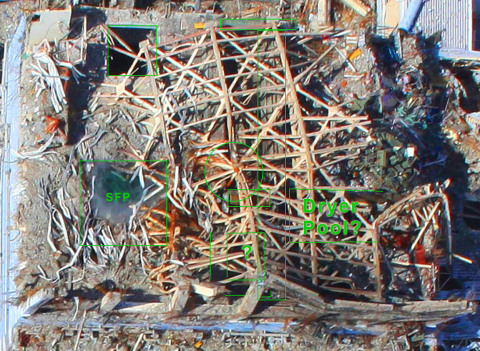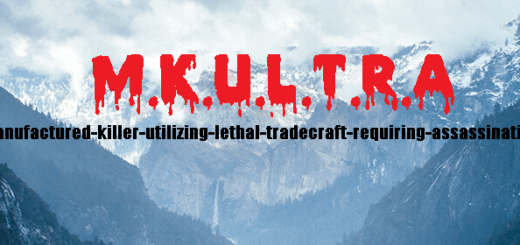Helpless, Dying Baby Sea Lions As Zionist Funded Animal Activists Stay Silent!
PETA keeps quiet about mass deaths of starving sea lion pups believed to be as many as 10,000 dead and dying pups (70%) worst disaster ever! Starvation is an extremely painful way to die…..amazingly PETA has nothing to say about this brutal mass death of forlorn pups! Maybe, they’re too busy counting money to pay attention to this. Or perhaps they don’t want to alienate their corporate sponsors or government….wild animals deserve to be cared for too especially since they are more at risk in environmental disasters….Fukishima radiation could be causing the hair loss and tumors of many dying sea lions.
Excerpt From NYTimes:
For 14 years, since they first reported that a disturbing proportion of deaths among rescued California sea lions were caused by metastatic cancer, researchers have been trying to pinpoint the source of the illness.
In 1996, Dr. Frances Gulland, the director of veterinary science at the Marine Mammal Center in Sausalito, and colleagues at the University of California, Davis, found that a striking 18 percent of deaths in stranded adult sea lions were the result of tumors in the reproductive and urinary tracts.
“It’s such an aggressive cancer, and it’s so unusual to see such a high prevalence of cancer in a wild population,” Dr. Gulland said. “That suggests that there’s some carcinogen in the ocean that could be affecting these animals.”
The center has not observed the same syndrome in other seals.
Years of study have led researchers to think the answer lies not with any one culprit, but with several. Their research has added to a body of evidence concerning industrial contaminants in the ocean and their effects on the health of its inhabitants. (I must say I disagree with this comment as I feel this has everything to do with the Fukushima radioactivity now washing up along the entire west coast…)
Sea lions have had to cope with a variety of challenges lately. There was the animals’ mass exit from Pier 39 in San Francisco late last year, which experts suspect was driven by a hunt for a better food supply. Also in 2009, the Sausalito mammal center had an unusually busy year. It took in a record 1,370 sick and injured California sea lions, and doctors found major problems in many, including malnutrition, parasitic diseases and bacterial kidney infections. Some had brain seizures from a toxic algae poisoning.
But the cancers are what Dr. Gulland found most worrisome.
One day last month, a volunteer rescue crew netted an ailing sea lion stranded on Stinson Beach and drove back to the hospital, which was newly rebuilt and reopened last summer. The thin, lethargic 200-pound young adult male had paralysis in its genital area and in its swollen hind flippers, clear signs of cancer.
“It’s pretty distressing to see,” Dr. Gulland said.
The veterinary team had to euthanize the animal. A post-mortem examination revealed not only cancer in the penis, but also tumors riddling the lymph nodes, lower spine, kidneys, liver and lungs. The disease typically starts around the penis in males and the cervix in females, then spreads. In an average year, the Marine Mammal Center sees 15 to 20 California sea lions with cancer.
The center always performs a post-mortem dissection. That work is “really what tells us about health trends in the ocean,” Dr. Gulland said.
The nonprofit center is one of the two biggest marine mammal rescue-and-rehabilitation facilities in the world — the other is in the Netherlands — dedicated to researching the health troubles of the animals it finds, said Dr. Sylvain De Guise, a veterinary scientist at the University of Connecticut.
Members of the medical staff in Sausalito, Dr. De Guise said, “have been pioneers at going beyond treating one individual at a time and
releasing it, and have tried to understand the bigger picture, the causes and consequences.”
Ordinarily, veterinary experts do not see much cancer in wild animals, but there has been little monitoring for the disease. Recently, however, cancer has emerged as a key concern for some endangered species, including green sea turtles, Attwater’s prairie chickens and Tasmanian devils, said Denise McAloose, a veterinary pathologist at the Wildlife Conservation Society in New York City.
In addition, about 18 percent of dead, stranded beluga whales in the St. Lawrence River estuary in Canada were found to have intestinal tumors or other cancers, which have been linked to industrial pollutants.
No one knows how much of the general California sea lion population has tumors, or if the current rate is higher thanbefore. No diagnostic test for the disease exists, said Dr. Robert DeLong, a research biologist at the National Marine Mammal Laboratory in Seattle who has participated in the cancer studies.
Enough of Main Stream Media….Fukushima is spewing millions of gallons of poisonously radioactive water into the ocean and these
pups are defenseless against this radiation onslaught as well as their food sources (sardines and anchovies) disappearing-levels down 98%. Very sad and very horrific!
https://www.youtube.com/watch?v=MlcyYGReNbE
Animals have the right to a clean and uncontaminated environment, plentiful food sources, and to die with dignity….this scenario offers NONE of the above. The TEPCO plant leaking all the radiation was built by General Electric…see article below:
ABC News reported in 2011:
The New York Times reported that other government officials warned about the dangers inherent in GE’s Mark 1 design:
This faulty design has made the Fukushima disaster much worse. Specifically, the several reactors exploded … scattering clumps of radioactive fuel far and wide. In addition, the Mark 1 included an absolutely insane design element: storing huge quantities of radioactive fuel rods 100 feet up in the air. The Christian Science Monitor noted: A particular feature of the 40-year old General Electric Mark 1 Boiling Water Reactor model – such as the six reactors at the Fukushima site – is that each reactor has a separate spent-fuel pool. These sit near the top of each reactor and adjacent to it …. Indeed, the fuel pools have caught fires several times, and now constitute an enormous danger. As we noted last year, the spent fuel pool at Fukushima reactor number 3 is in a heap of rubble (spent fuel pool designated as “SFP” in the lower left):
Nuclear fuel rod expert Gundersen says the pool at unit 3 is in much worse shape than at 4: Unit 3 is worse [than No. 4]. Mechanically its rubble, the pool is rubble. It’s got less fuel in it [than unit 4, but] structurally the pool has been dramatically weakened. And, god nobody has even gotten near it yet. He’s right. It’s too radioactive for Tepco to even get a look at what’s going on in the reactor pools at units 1 through 3, and they have no idea how to do it. Indeed, the technology does not even exist to approach those reactors, as the high radiation levels quickly destroy even robots. Heck of a job, GE … Postscript: Unfortunately, there are 23 virtually-identical GE Mark 1 reactors in the U.S. This is not to say that Tepco and the Japanese government are not to blame also. They are. But GE and the American government are largely responsible as well. (All emphases in bold by the original writers at Washington’s Blog) Source: Washington’s Blog This makes me absolutely FURIOUS that baby sea lions should have to die of hunger because of a bunch of corrupt, corporate assholes….everyone and anyone who cares about animals should be outraged! GE Executives should be in prison for life for criminal negligence…where are the arrest warrants? General Electric by the way worked with the Nazi’s and funded Hitler! Boycott GE as much as you can…do not sign loan agreements with them and try to find an alternative source of electricity…as for me I am calling Congress and asking them what are they doing to help these babies….do not buy GE stock…the Marine Mammal Center in Sausalito is in desperate need of funding..here is their address: 2000 Bunker Road, Fort Cronkhite, Sausalito, California 94965 or go to their web address: marinemammalcenter.org and you can donate there. Once again, a crooked, evil corporation flouts their criminality, animals and humans die and the US taxpayer and private charities foot the bill. I am sick of this…TIME FOR SOME SERIOUS CHANGES! By the way, any of you going to California this center gives FREE Tours and it is doing wonderful work rehabilitating distressed sea creatures. It is a real marine mammal hospital. It’s time to put these GE executives in jail or force them to deal with the problem they caused. |















